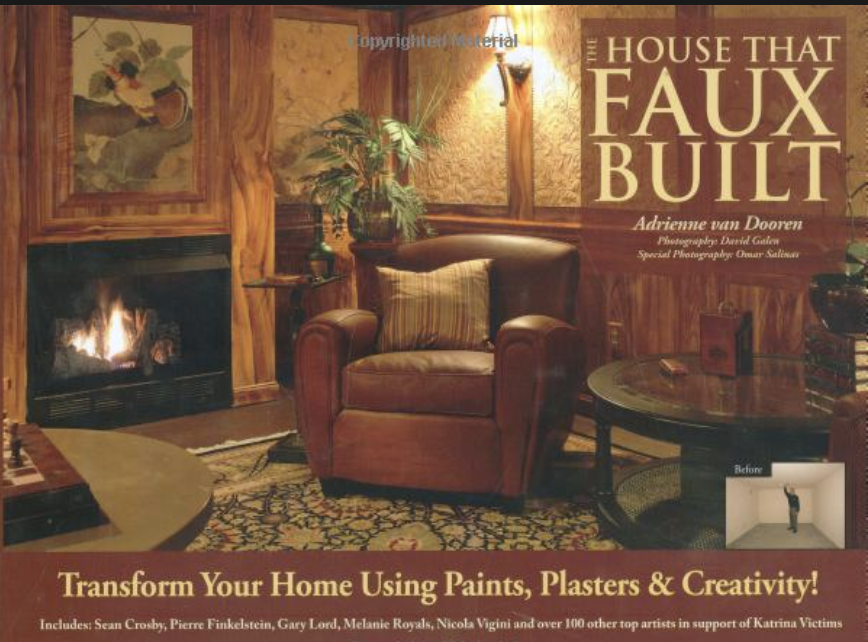The House that Faux Built

December 2018: A Note from Hope Katz Gibbs, founder and president, Inkandescent PR + Publishing Co. — When Adrienne Van Dorren of Alexandria, Virginia, went to check out a model home a few years she noticed some extraordinary faux painting throughout the house. But when she asked the designer who had done the work, the woman wouldn’t tell.
“It made me angry because I’m a faux painter, and it didn’t seem fair that she would not give the artist any credit,” explains van Dooren, who decided the only way to liberate faux artists was to showcase them. She also wanted to prove that, for only a little money, the average person could use faux techniques (such as crackling and aging or sponging paint) to transform a home.
To create a how-to book, van Dooren purchased a dilapidated three-bedroom 1940s colonial in a modest Arlington, VA, neighborhood.
Then she asked 100 of her favorite faux artists from across the country to create a masterpiece. “If you know what you are doing, you can spend a fraction of what you would on an expensive wood floor or granite countertop and get the same effect with paint, plaster, and some useful tools,” van Dooren says.
Visual trickery? Perhaps, but consider the results: Artist Tania Scabock transformed the cement floor of the house’s side porch, so it now looks like inlaid marble and walnut. The project has been successful. About $45,000 from house tours, book sales, and other fund-raisers have been donated to Habitat for Humanity.
A revised edition of her book about the project hit bookstores in April 2007. Look for The House That Faux Built: Transform Your Home with Paint, Plasters, and Creativity (East Cambridge Press).